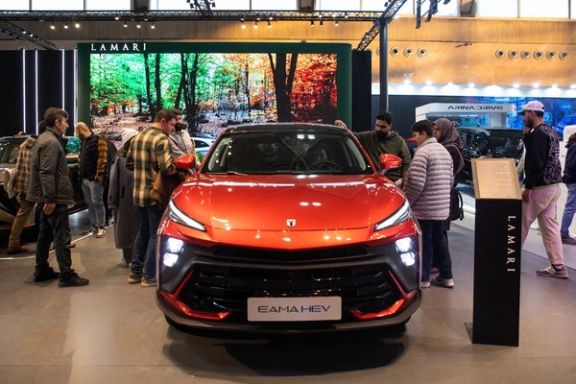“With the return of UN Security Council sanctions and the exposure of sanction-evasion methods, will Chinese automakers still be willing to operate in Iran?” the business daily Donya-ye-Eqtesad asked this week.
The share of private automakers in Iran’s car market has tripled over the past eight years, according to a recent parliamentary report, driven largely by Chinese partnerships.
But the reactivation of the UN “snapback” mechanism and renewed Western pressure have cast doubt on their long-term presence. If Chinese firms were to withdraw, the market could face severe disruption.
Chinese automakers increasingly rely on barter trade to skirt US restrictions, according to a Bloomberg report, with vehicles and auto parts shipped to Iran in exchange for copper and zinc.
Factories under strain
Iran’s automotive “pyramid” places domestic models at the base, Chinese-assembled cars in the middle, and high-end imports at the top. Losing the middle tier could trigger sharp price increases across all segments.
The auto-news site Pedal reported last month that several Chinese automakers have instructed their Iranian partners to lay off about 30 percent of production-line staff and to suspend both cash and installment sales.
The industry also fears further price hikes as the rial continues to slide against the dollar.
Parts shortages have deepened the malaise.
Economist Albert Baghzian of Tehran University told the government-run Iran newspaper: “Visit any Chinese car dealership today and the first thing you hear is, ‘We have no parts, we’re sanctioned.’”
To cushion the blow, major assemblers such as Kerman Motor (which produces Chery’s Tiggo line), Iran Khodro (Haima), and Saipa/Pars Khodro (Brilliance) are rebranding Chinese models, working with smaller firms less exposed to sanctions.
Flashy but distrusted
Vehicle imports are restricted and tightly controlled.
Prices of imported cars cannot exceed $35,000, and only a few models—from Changan, DFM, Geely, Haima, Kia, Hyundai and several Chinese SUVs—have entered the market.
Some Korean and Japanese brands like Toyota, Kia and Mazda reach Iran through free-trade zones, but European and American models such as Mercedes-Benz, BMW, Peugeot and Ford remain largely absent.
Middle-class buyers praise the design and technology of Chinese cars compared with domestic models from Iran Khodro and Saipa. Reza, a shop owner in Tehran’s Grand Bazaar, quipped they were like “a fake Rolex: flashy, but unreliable.”
He told Iran International that while Chinese SUVs have improved, many owners report problems after 30,000 to 40,000 kilometers, including rattling cabins and gearbox failures.
“The market still doesn’t trust them,” he added.
In inflation-hit Iran, where cars serve as a store of value, that perception carries weight.
One user on X wrote, “A 2024 Chinese-made Toyota Corolla sells for 2.7 billion tomans and finds no buyers, while a 2015 Japanese-made Corolla with an unknown history is listed for 3 billion! Once you drive both, the quality gap is obvious.”










